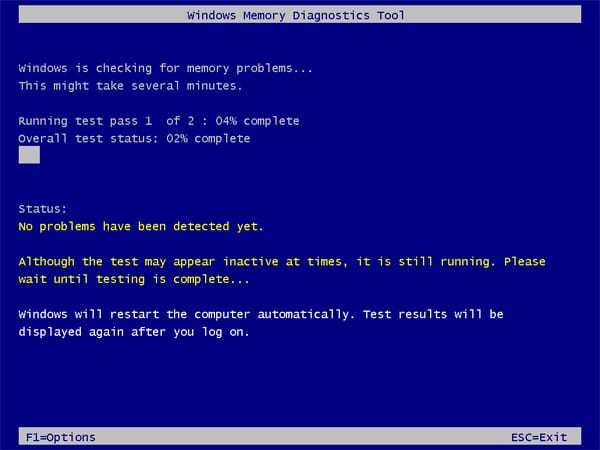RAM (Random Access Memory) is the part of computer hardware, which is often the cause of many system problems. If you are facing any Blue screen of death (BSOD) Error, Computer frequently hangs, often reboots during RAM intensive use (in games, 3D applications, video and graphics editors) All these problems could be symptoms of hardware problems. A defective memory stick could cause all sorts of problems for your computer. Windows has an awesome tool called Windows Memory Diagnostic tool which you can use to check for possible memory problems, including testing of the Random Access Memory (RAM) on your computer.
Running Memory diagnoses would be a good thing to do as the first step of your troubleshooting process. It can help you to detect the memory problem of your PC. It will just find out RAM problems. The windows memory diagnostic tool runs a comprehensive test and displays the test results so you can take immediate action.
Run Memory Diagnostic Tool Windows 10
- To open Memory Diagnostic Tool Open the control panel and type ‘memory’ on the search bar. Then click on ‘Windows Memory Diagnostics’ to open it.
- Also, you can type Memory diagnostic Start Menu search You will see the Windows Memory Diagnostic app as the suggestion. Click on it This Will open the windows memory diagnostic tool,
- Alternatively, you can press the Windows key + R, then type mdsched.exe and hit enter to open it.
Now you have to choose between two options: ‘Restart now and check the problems’ or ‘Check for problems the next time I restart my computer.
If you choose to restart and check the problems, make sure to save all your work and close all the running programs on your Windows 10 computer, or do so the next time when starting your computer.
When you restart the Windows, the Memory Diagnostics Tool automatically starts running tests on your PC’s memory. Be patience as it might take some time to finish running the diagnostic tests. The system will also display the progress bar and the status notification during the process.
Advanced options for running the Memory Diagnostics Tool
Here you can press F1 To Access The Advanced options to adjust the tool’s settings When the Memory Diagnostics Tool starts.
You can adjust the following settings:
- Test mix: Choose what type of test you want to run: Basic, Standard, or Extended. The choices are described in the tool.
- Cache: Choose the cache setting you want for each test: Default, On, or Off.
- Pass count: Type the number of times you want to repeat the test.
Now After making changes for advance options press F10 To Apply changes and Start the Test. It might take several minutes for the tool to finish checking your computer’s memory. Once the process is finished, your computer will reboot and return to the Windows desktop.
Now When you log on, It will show you the Result. But sometimes, You may not see the result automatically. In that case, You have to find it manually. The result can be found in the Windows Event Viewer.
Find windows memory diagnostic tool Test Results
To Check Memory Diagnostic Test Results:
- Press Win + R type ‘eventvwr.msc’ into the run dialog box and press enter key
- This will open the Windows Event Viewer Screen.
- Now Locate the ‘Windows Logs’ on the right side and open it and click on system.
- You will see all system logs listed in the middle of the Window, (The list may be huge)
- It is very difficult to find the result from it. So, You have to filter the result so that you can find it very easily Click ‘Find’ on the right pane.
- On the box that pops up, type ‘MemoryDiagnostic’, then click ‘Find Next’.
- The test results will open at the bottom of that same Window.
- Double click the event log entry to see the details and whether there are any errors detected.
Also read:
- How To Fix Windows 10 Memory Management Error Stop code 0x0000001A
- Google Chrome Slow, Not perform well on Windows 10? Try these solutions
- Fix your pc ran into a problem windows 10 Blue Screen Error
- Fix Windows 10 freezes randomly And Restarts Automatically
- Solved: Unknown Hard Error on Windows 10 / 8 / 7 (5 Working Solutions)
















